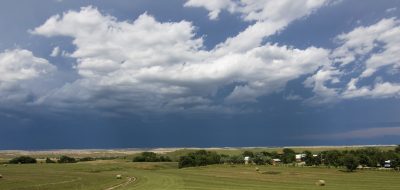It’s OK if you don’t have the weather talents of Al Roker. And, so what if you always thought climatology was a new spiritual movement adopted by Hollywood. You have always been just fine with leaving the weather forecasting up to the professionals.
But, what if you live the mobile lifestyle and are typically on the road, on the water, or outside on the job? It sure would be nice to know the upcoming weather conditions in those situations, wouldn’t it? Guess what? It’s possible and that is where NOAA comes in.
What’s NOAA? NOAA stands for the National Oceanic & Atmospheric Administration and is a public service provided to us by the U.S. Department of Commerce. It provides the American public, through NOAA Weatherband radio stations, with instantaneous weather reports and emergency information from around the nation. It is considered the “voice” of the National Weather Service.
Great. So, NOAA is out there forecasting the weather, but how does that help me in my day to day life? Luckily, you don’t need to be a meteorologist to take advantage of weather updates provided by NOAA. Most of us assume you can only receive NOAA Weather information through weather forecasters, old school CB radios, or crackly scanners. However, you may be surprised to know that several AM/FM stereos are set up to receive and deliver NOAA Weatherband radio right through the head unit!
So I can get the latest weather updates at any time, right through my stereo? Exactly. But, you must have a stereo that is weatherband-ready to take advantage of NOAA. It works like this. NOAA Weatherband radio transmits information through frequencies, just like standard AM/FM stereos. Once a weatherband-ready stereo is in the weatherband mode, it can then be tuned into specific NOAA stations. For instance, if a person wanted to obtain weather reports while in Louisville, KY, they would tune into station 162.475 on their stereo to receive the latest information. The broadcast range is approximately 40 miles, so if you are in any area within that distance of Louisville, you would be able to receive the weather report. If you are outside of the 40 mile radius, you would then tune to another weatherband station that covers that specific area.
Stereos with NOAA Weatherband capability can have access to more than 425 weatherband channels from across North America, including nearby coastal waters, Puerto Rico, and the U.S. Virgin Islands and Pacific Territories. This coverage is highly beneficial for those that spend a large amount of time out on the road.
Sounds like a great advantage. Anything else I need to know about NOAA? Another benefit offered to mobile industries through NOAA Weatherband is NOAA “Weather Alert”. Weather Alert is an exclusive alarm feature that warns listeners, with a special audible tone, when dangerous weather conditions or situations are on the horizon. It’s kind of like NOAA keeping you in the know! The Weather Alert software will even automatically turn on some weatherband capable stereos in the listening area when dangerous conditions are imminent. Weather Alert is typically only found on selected weatherband stereo models, but it offers even more safety benefits and awareness for those who spend significant time out on the road or water.
Now you know how you can get in the know. With NOAA!


Survival Supplies
I always used to read piece of writing in news papers but now
as I am a user of net so from now I am using net for articles or reviews,
thanks to web.
Serge Cossette
Where can I find a NOAA compatible FM radio.
Do you have a model recommendation.
My RV is a travel-trailer.
Regards.
Jim
We have a NOAA radio from Oregon Scientific. It is a small hand-held device, battery-operated. When we travel it sits on a counter-top. Because of it’s size it can be carried on a belt clip. We also receive Amber alerts. Like my AMEX card I don’t leave home without it.